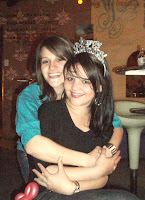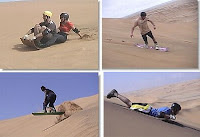The name of the country derived from the Namib Dessert – which is the oldest dessert in the world. Namibia shares its borders with the Atlantic Ocean, Angola, Botswana, Zambia and South Africa. Namibia used to be part of South Africa but gained its independence in 1990. Windhoek is the biggest city in Namibia. Namibia has a population of about 2 million people making it the second least populated country in the world (after Mongolia).
Geography, Weather & Climate:
Namibia experiences more than 300 days of sunshine per year. The winter is generally dry and the rainy seasons are around October – November and then March – April. The weather and climate at the coastal area is usually dominated by cold because of the Benguela Current of the Atlantic Ocean. Temperatures in the city can reach up to 46˚C and trust me….it’s hot!!
The Namibian landscape consists of plateau, city, escarpment, bushveld, karroo, and Kalahari dessert.
The dunes extend and stretch along the entire coastline and the dunes are created by the strong onshore winds. The coastal dessert boasts some of the highest dunes in the world (such as dune 7 which Ricardo and I climbed-we’ll post photos up soon!). The Namibian coastal desserts are one of the richest source of diamonds on earth. The dessert sits behind the ocean and literally a thin road splits the two beautiful sceneries.
The spectacular Etosha Pans, birds and wildlife can be found in the bushveld (which is a dry Saline wasteland). The karoo is home to over 5000 species of plants. Another important feature of the Kalahari is it iselbergs (isolated mountains) that create microclimates and habitats for micro-organisms that cannot adapt elsewhere. Namibia has rich coastal and marine sources which remain largely unexplored.
Language:
The official language in Namibia is English and German (32%) and Afrikaans (60%) and then Oshiwambo (50%). Portuguese and Angolan make up 7% of spoken languages in the country.
Currency & Economy:
Namibia’s main economic activity comes from; mining, agricultural and manufacturing and tourism. Mining activities include; diamonds, uranium, lead, zinc, tin, silver and tungsten. The main mining activities are that of diamonds and uranium. Namibia is set to be the largest exporter of Uranium by 2015.
Because of South Africa and Namibia’s history, their economy is tied closely with mining. South Africa uses the Rand (R) and Namibia uses the Namibian Dollar (N$) which are of the same value, so R1-00 = N$ 1-00. See below...Namibia just made a N$10-00 coin!!
Main tourism sites include: Windhoek, Swakopmund, Walvis Bay, Skeleton Cost, Fish River Canyon, Luderitz, Sossusvlei, Etosha Pan, Caprivi Strip and Sesriem. Tourist activities include game drives, climbing dunes, 4x4-ing, sand boarding and sky diving and there are many lodges and resorts.
Unfortunately, nearly half the population of Namibia fall below the poverty line and Namibia experience a high unemployment rate in both skilled and unskilled sectors. The Government is putting measures in place to alleviate poverty and unemployment and strict laws are being put into place to employ Namibians, unskilled labourers, pregnant people and those affected with HIV/Aids (hence the difficulty of getting a work permit).
Health:
15% of the black adult populations (about 210,000 people) are infected with HIV/AIDS and it was reported that about 18,000 infected people died in 2003. Malaria can be contracted up north of the country.
Pre-colonial periods to the 21st Century:
The dry lands of Namibia were inhabited by the Bushmen, Khoisan, Herero and Damara since the 14th Century and were immigrated by the Bantu. The first Europeans to explore Namibia were the Portuguese but was only later exclusively explored by the Germans and British in the 19th Century. Namibia became a German colony in 1884. Below are some of the Herero and traditional woman found in Namibia...you can see them walking on the streets and can take photos with them. (They smell baaaaad!)


From 1904 to 1907, the Herero and the Namaqua took up arms against the Germans and in the subsequent Herero and Namaqua genocide, 10,000 Nama (half the population) and approximately 65,000 Hereros (about 80% of the population) were killed. The survivors, when finally released from detention, were subject to a policy of dispossession, deportation, forced labor, and racial segregation and discrimination in a system that in many ways anticipated apartheid. Indeed, some historians have speculated the German genocide in Namibia was a model used by Nazis in the Holocaust. The memory of genocide remains relevant to ethnic identity in independent Namibia and to relations with Germany.
Since independence Namibia has successfully completed the transition from white minority apartheid rule to parliamentary democracy. The first President of Namibia was Sam Nujoma – for 15 years and his successor since 2005, the current President is: Hifikepunye Pohamba. The centre of the Namibian Government can be seen in the picture below. We have taken photos at the Presidential Gardens which I’ll put up later;
So now that you know more about Namibia...come visit us!!






























































